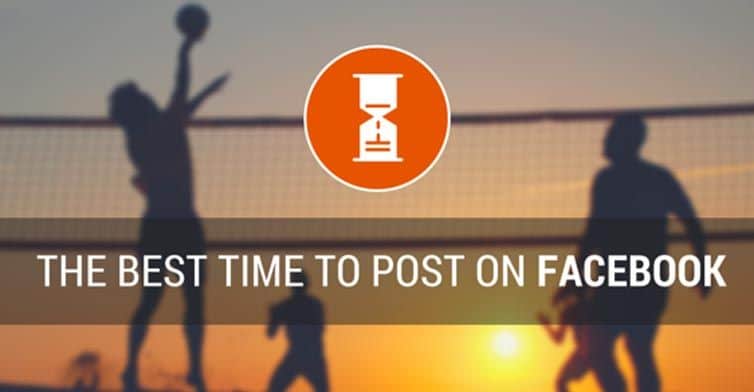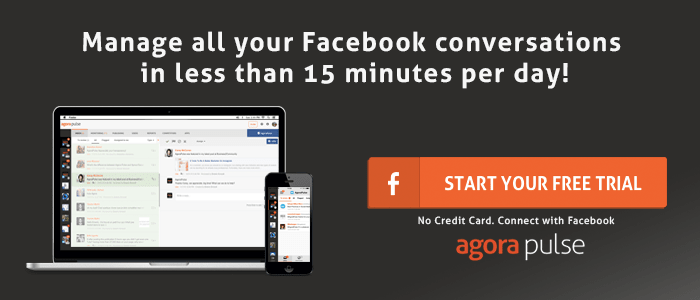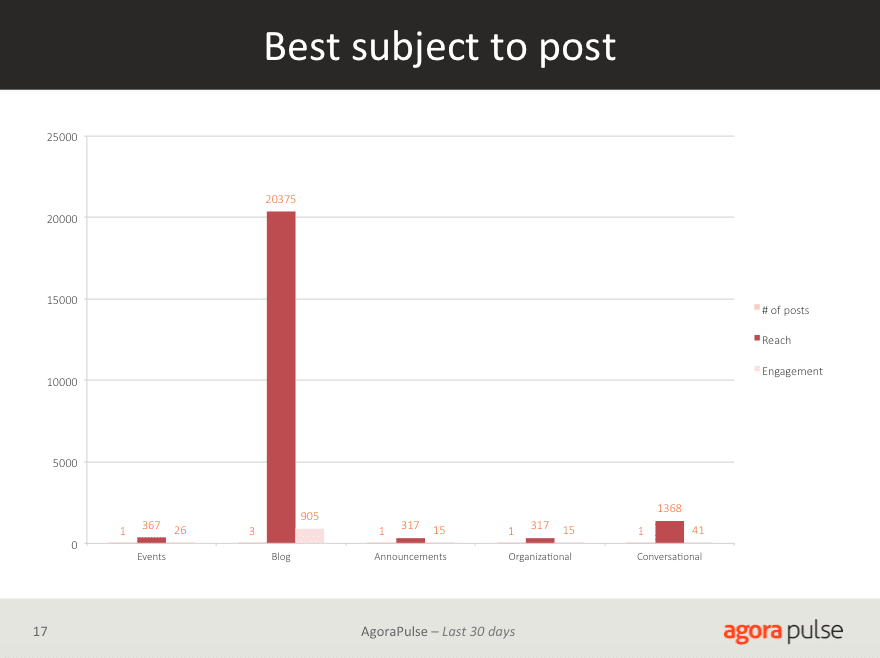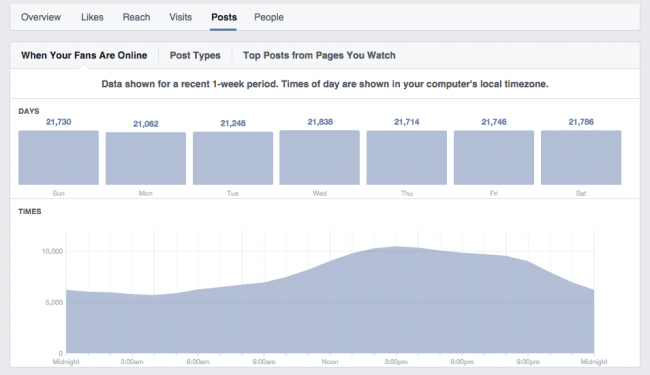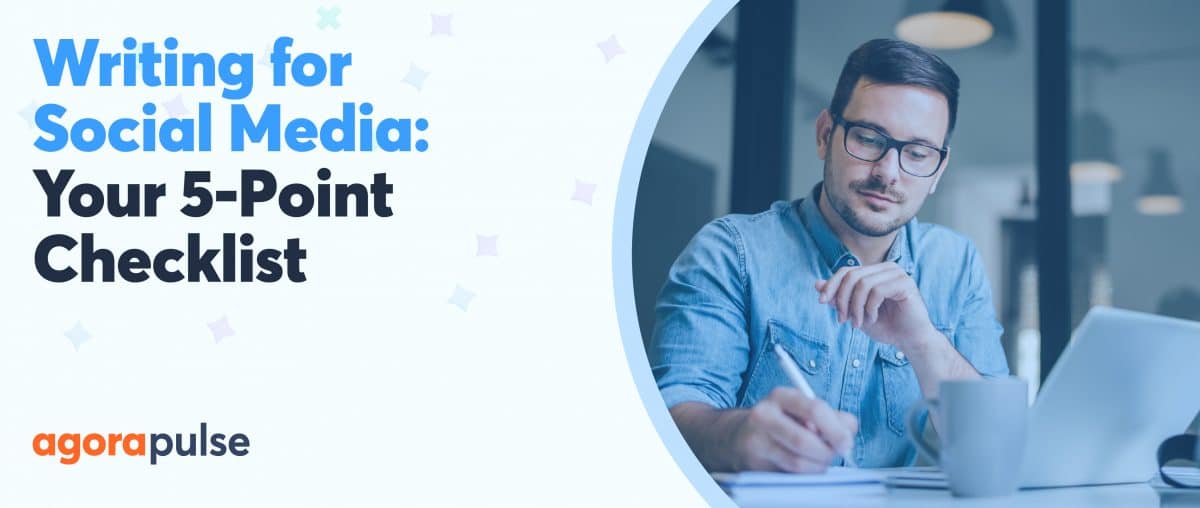[[updated October 14, 2016]]
Facebook may offer more data than most social marketers know what to do with, but it doesn’t say much about the algorithm it uses to determine a post’s reach. How the world’s most popular social network works is still, unfortunately, very opaque. The biggest mystery of all is: When is the best time to post on Facebook for maximum reach and engagement?
If we all knew the answer, we’d all schedule our Facebook posts for exactly that time, wouldn’t we?
You’ve probably heard all kinds of things. In fact, if you Google it you’ll discover popular infographics and industry reports that literally contradict one another. Everybody on Twitter seems to have a different opinion too.
Or check out the “diversity of answers” in the Quora thread on “When is the best time to post an update to Facebook?”
It’s hard to know who to believe. And that’s understandable. Today, we’re going to talk about when the right time to post really is.
1. When Should I Post on Facebook?
It depends. It’s really a question of when the right time to post is for you.
And to answer that, you have to consider:
- Who your audience is
- When they’re online
- How they’re engaging
I know that must sound like a cop-out – a non-answer, even – but it’s true. What’s more, you know it.
You, like every other marketer, understand targeting very well. You don’t believe in a universal advertising voice, brand image, or price point. Frankly, you’d laugh if somebody asked what the best kind of product packaging is. Plastic, paper, cardboard? Bright colors or black and white? Long descriptions or no copy at all?
It depends, of course. You wouldn’t market action heroes to 11-year-old boys the same way you’d market cosmetics to middle-aged women. Moreover, 11-year-old boys don’t watch television at 11 PM on a Tuesday night as much as they do at 9 AM on a Saturday morning. If advertisers don’t time their commercials accordingly, they won’t sell very much.
It’s the same way with Facebook.
2. How Do I Figure Out What Times Are Right for Me?
Start with the data you have.
Jon Loomer recommends pulling up Facebook Insights and reviewing your most successful posts over the past 3 months. Look for the ones that had the most engagement and the greatest reach. Then, look at when you posted them.
Was it at night, in the afternoon, or in the morning? Weekends or weekdays? Did holidays go over well, or not?
Also, what was your cadence like? Did you post every day, every other day, or weekly? Did engagement and reach decline the longer you waited to post again?
If you have a large international audience, you might notice periods of activity that don’t make sense, because they’re taking place in another time zone. And if you’re catering to an audience that works odd hours – like graveyard shift workers – high engagement at 2 PM will probably look strange.
Be sure to put your Insights data into context.
Or, if you’re not a nerd like Jon, just let an affordable social media management tool do it for you. Plenty of third party tools recommend an optimal posting time by aggregating the sum of your reach performance over a specific period of time, like 2 weeks or 30 days. This can be faulty though, due to inconsistent publishing and external events such as sales, competitor activity, and world events.
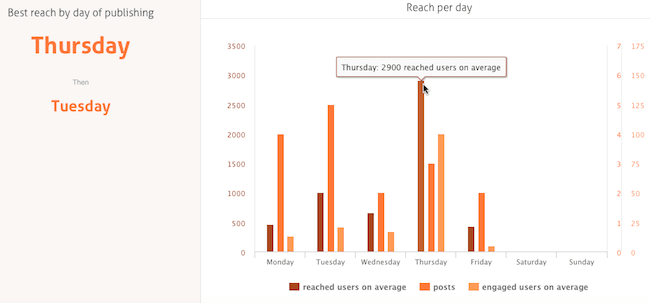
Agorapulse recommends the best time to publish Facebook content based on the performance of your last 50 Facebook Page posts.
Agorapulse recommends the optimal time to reach and engage your audience based on the performance of your last 50 Facebook Page posts – not just a set a period of time, which may not be very active at all – so you get a more accurate reading of what works.
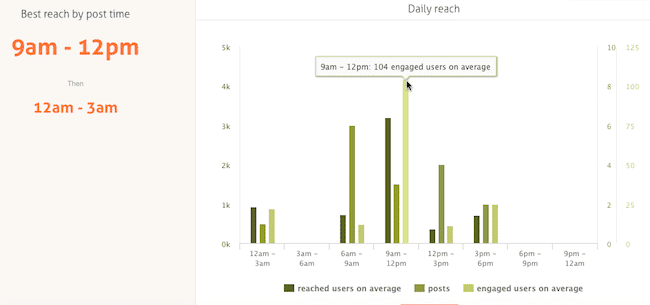
Agorapulse recommends the best time of day to publish to Facebook based on the performance of your last 50 page posts
Agorapulse also tells you what subjects perform the best in your content strategy, delivering all your data in a customizable PowerPoint report – with just one click!
3. Are There General Trends in Deciding The Right Time to Post?
Though we can’t say there’s a universal best time to post – there simply isn’t – we can say there are a few tactics for getting the best results once you know what your best time to post is.
Lately, more than a few marketers have noticed that posting at non-peak times – when most of your fans aren’t online – can bring the strongest results. It sounds very strange. It’s counter-intuitive. It just shouldn’t work.
But it does, and it works reliably too. What’s more, it’s pretty easy to see why.
When you post during the most popular hours of the day (or night), you have to compete with more posts for visibility. The odds of your post being displayed decline with each post somebody else publishes. It doesn’t matter how many eyes are on Facebook when they can’t see what you’ve written.
Before you leave Facebook Insights, check the “Posts” subheader for data on the day and time your fans are least active. And post then.
Just to be sure, set up a control group too – post during the most popular time, as well during a middle-of-the-road one – and do this with several types of posts (photos, links, etc.). Then, you’ll know better if this tactic works – and how well, if so – for your unique business.
This bears repeating: the best data is always your own.
Start experimenting with your brand, product, and customers, on what we’ve shown you above and you’ll discover the best time for your company to post on Facebook, not just your competitors or your industry.
You can analyze the success of your posts with gorgeous Facebook reports in your Agorapulse dashboard.
(Want your own Facebook report from Agorapulse? Get it during your free trial. Sign up today!)
Then let us know what it is. Weekends or weekdays? Nights or mornings? Tell us in the comments below!
